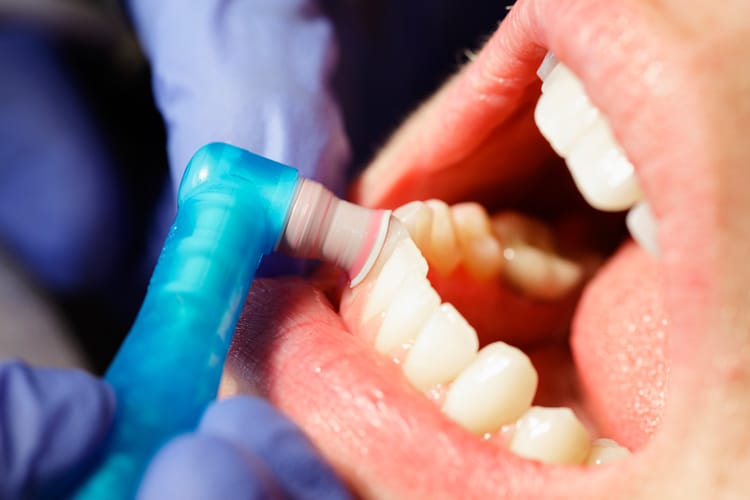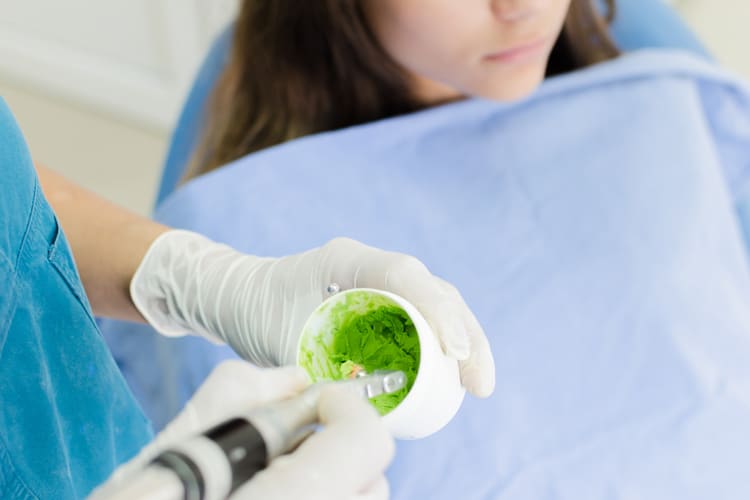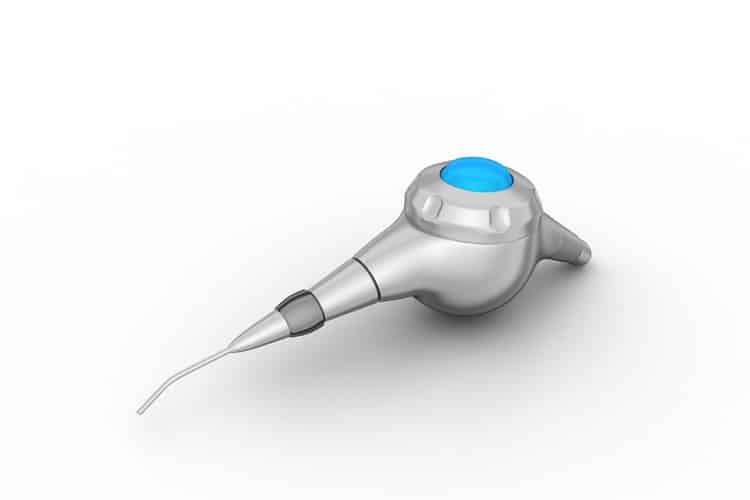Air Polishing to Remove Stains
Dietary and social habits greatly impact dental stain accumulation.

Dietary and social habits greatly impact dental stain accumulation. Smoking tobacco/marijuana and chewing or dipping tobacco obviously affect extrinsic stain formation, but chemical agents may also play a role in the complexity of stain buildup. The use of stannous fluoride, antibiotics, and chlorhexidine, as well as exposure to iron in drinking water impacts the color and intensity of extrinsic stain. Dietary changes include an increase in the amount and frequency of consumption of stain-producing and acidic beverages, such as coffee, tea, wine, and sports drinks.
Photo Credit: coffeekai / iStock / Getty Images Plus

Prophylaxis
Several factors should be considered when selecting a rubber cup polishing agent for stain removal. The hardness, particle shape, and size affect the abrasiveness of the polishing agent. The hardness of the polishing agent must be harder than the surface that is being polished. The abrasiveness of an agent is partially determined by the particle shape. An angular particle shape has a sharper edge than spherical particles and will scratch the surface to be polished more aggressively. A smaller particle size will be less abrasive than a larger particle agent. These parameters are distinguishable by the grit description for prophy paste (eg, fine, medium, coarse, or extra coarse). In areas of erosion or demineralization, the clinician should evaluate the use of abrasives on softened tooth structures and determine the value of alternative strategies, such as the use of cleansing-only pastes.
Photo Credit: RichLegg / E+

Ingredients in Air Polishing Powder
Sodium bicarbonate, aluminum hydroxide, calcium carbonate, and bioactive glass may be used for supragingival polishing; however, each varies in particle size, shape, and hardness. Sodium bicarbonate exhibits a 2.5 Mohs scale of hardness, whereas bioactive glass is a 6. These variations will impact the surfaces that can be effectively polished without causing damage to the tooth or restorative surface. Bioactive glass particles have a high Mohs scale of hardness and the abrasive effects on tooth structures and restorations are unknown. Sodium bicarbonate and aluminum hydroxide powders are effective for stain removal on tooth surfaces but are too abrasive for esthetic restorations and dentin/cementum. Metal restorations may be dulled with these abrasive products and utilizing alternative polishing options may be best.
Photo Credit: RobertoDavid / iStock / Getty Images Plus

Application Technique
In addition to the physical properties of air polishing agents, optimum application is essential to minimizing the risk of structural damage. Trauma to tooth structures, restorations, and gingival tissues can occur with improper technique, causing pitting of restorations, loss of marginal integrity, and surface roughness. Technique also influences the abrasive penetration of an agent. The device nozzle design, water settings, and proximity to the treated surface can help control the amount of abrasion to the tooth or restoration. The nozzle spraying distance should be 2 mm to 7 mm from the polishing tip to the tooth surface. This will reduce the risk of damage to existing dental structures.
Photo Credit: rendeep / iStock / Getty Images Plus

Glycine Powder
The use of low abrasive glycine powder in air polishing has broadened the scope of this technology in dentistry. This technique uses specially designed armamentarium to deliver subgingival irrigation to remove plaque and debris. Dental hygienists may consider the benefits of augmenting polishing procedures with subgingival air polishing irrigation to offer stain removal benefits along with biofilm removal benefits.
Photo Credit: Aja Koska / E+

Maintaining Health and Esthetics
Many factors should be considered when treating dental stain. The type of stain and affected surface will impact the appropriate mode of treatment. In today’s society, white teeth are highly valued and many patients will present to the dental office desiring a brighter, whiter smile. Oral health professionals are charged with not only providing positive esthetic results and advising patients on how to reduce staining, but helping patients achieve positive oral health, as well.

